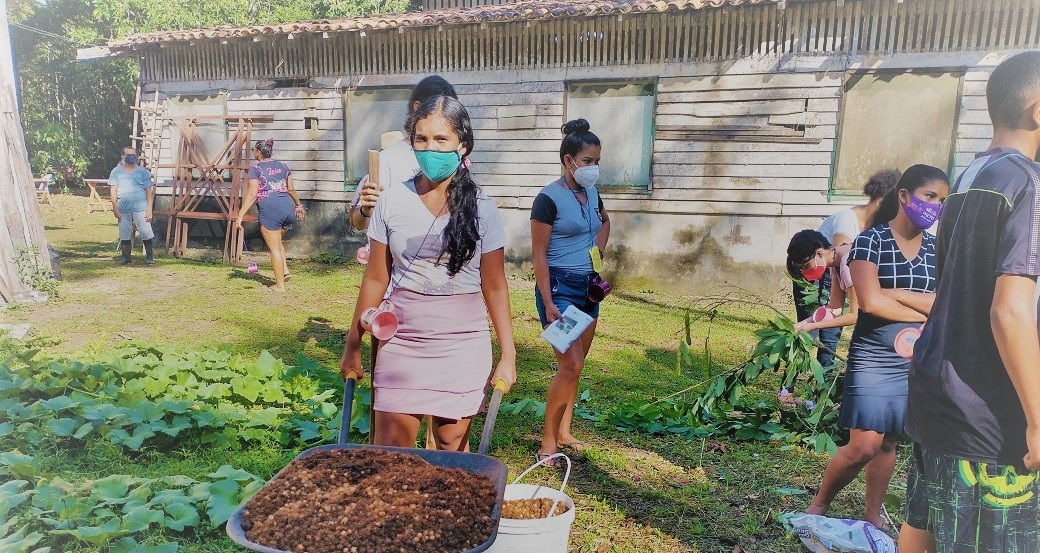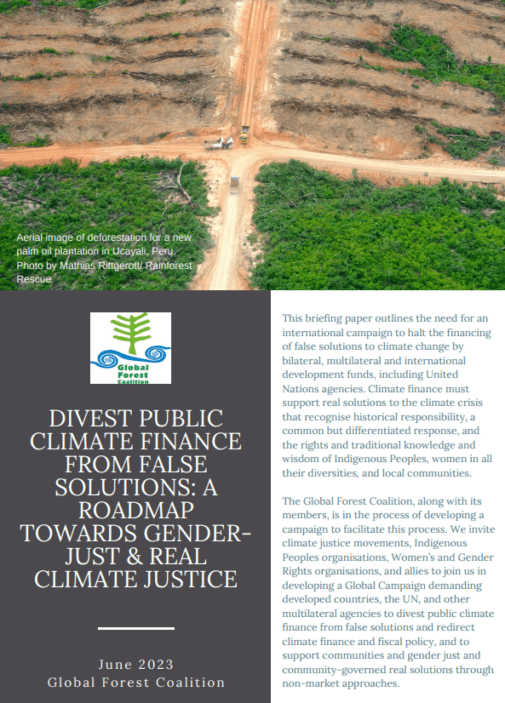Influence of GM feedstock products for industrial livestock farming and related pesticides on human health and the environment

By Svetlana Abramovich*
Genetically modified food (GM food) has been a hot topic since its first discovery. Various experiments of genetic engineering with organisms may seem progressive and even well known for the modern science but most of us consume GMOs without even knowing it, as we consume meat and dairy products produced with GM feedstocks. This article will highlight what GM feedstocks are and what consequences they have on the health and the environment of both who produce and consume them.
What are actually GMOs and where are they mainly produced?
GMOs (genetically modified organisms) are novel organisms created in a laboratory using genetic modification/engineering techniques. Therefore, according to the World Health Organization (WHO), “genetically modified foods are foods derived from organisms whose genetic material (DNA deoxyribonucleic acid) has been modified in a way that does not occur naturally, e.g. through the introduction of a gene from a different organism”19. By cutting and splicing the DNA of an organism, new functions, characteristics, or traits can be introduced into that organism5. As a result, most existing GM crops supposedly improve yield, through the introduction of resistance to plant diseases or of increased tolerance to herbicides19.
Nowadays, GMOs are commonly used in industrial agricultural production as a feedstock for cattle. One of the most common and widely spread feedstock is soybean. Let us take the example of the country of Paraguay where these two industrial sectors: livestock and soy production – are the most important primary production sectors. Soy is currently the country’s main export, ranking fourth in the world after the United States, Brazil, and Argentina and sixth in terms of world production. A vast proportion, about 96%, of the soybeans cultivated in Paraguay is destined for export as livestock feed. Most of the soy produced is GM and involves a seed-herbicide technology package. This means that the seed cannot be cultivated without the prescribed herbicide whose impact on our health and environment will be discussed in the article below10.
Dark sides of GMOs
Genetically modified crops and foods are promoted on the basis of a range of far-reaching claims from the industry and its supporters. They claim that GM crops are safe to eat and can be more nutritious than naturally bred crops. They also try to convince us that GMOs increase yields, reduce pesticide use and benefit the environment5.
These arguments in favor of GMO sound very promising, but everything is not as simple, as it seems to be. Basing on scientific and other authoritative evidence below, it simply is not true.
First of all, the genetic engineering process is not precise and predictable at all. It can destroy the genetic functioning in unexpected ways, resulting in unpredictable and unintended changes in the function and structure of the genetically modified organism. This process of creating a GM plant is highly mutagenic, which means, it damages the DNA, creating changes in the genome5.
Moreover, almost all of GM crops are processed with one or more herbicides to which they are themselves tolerant. The most popular and probably the most commonly applied weed killers in use today is Roundup based on glyphosate. Its toxic consequences include such damages and diseases as disruption of hormonal systems, damage to DNA, developmental and reproductive toxicity, malformations, cancer, and neurotoxicit5.
The farming with GM herbicide-tolerant crops is also not environmentally friendly. It is proven that chemical-based agriculture is a major contributor to climate change, producing over 20% of greenhouse gas emissions9. Moreover, the growth of GM plantations leads to deforestation. For example, in Paraguay many forests were destroyed to clear land in order to plant GM soybeans and other GM cereals. Deforestation rates in this region Chaco were the highest in the world in 2013, reaching up to 2,000 ha/day. Furthermore, the cultivation of GM crops damages the local population. In Paraguay, for example, many peasant and Indigenous Peoples’ habitats have been displaced, forming massive groups of “agribusiness refugees”, because their lands were occupied for the soy plantations10.
In Paraguay, the impacts on communities have been widespread. There are regular pesticide spraying of the crops and the communities who live near them. The chemicals sprayed into the air are also likely to contaminate the water sources in the surrounding areas. In testimonies of communities, they recount the grave health impacts they suffer from miscarriages, cancers, congenital malformations and unexplained deaths.
| One of the gravest events occurred on June 23, 2014, when two girls aged three years and six months died after unusually intense session of herbicide spraying, presumably applying Round Up or generic glyphosate. The link between the spraying and the girls’ deaths was impossible to determine conclusively as the authorities were reluctant to take samples expeditiously of the soil, water supply and tissue of the victims. Instead, the medical examiner claimed that rural people are often malnourished and hence are susceptible to respiratory ailments, which could be fatal (ABC, 25/08/2014). |
Negative influences of GMOs and related pesticides (herbicides) on our health
GM FOOD: Feeding studies on laboratory and farm animals show that GM food itself can be toxic or allergenic.
Two-year rat feeding study by Gilles-Eric Séralini and a multigenerational study in rats by the researcher Irina Ermakova have drawn conclusions about the dangers of the biotechnological methods used for gene introduction into plants which lead to pathologic changes in those who eat GM food. Irina Ermakova and other researchers (Arpad Pusztai and Stanley Ewen) have demonstrated pathological changes in different organs (liver, spleen, kidneys, stomach, rectum and others) in rats which were fed on GM potatoes and GM corn3,4,14,17.
The study of A. Pusztai also shows that GM food has potential to increase the risks of allergic reactions because of changing the DNA of a food. An altered DNA creates new proteins which can cause allergy14.
INSECTICIDES: In addition to the above subject about the health hazards from GM food, it is also proved that pesticides and insecticides which are being used for growing GM crops (Bt crops) can also damage our health and the environment.
Bt crops stands for a crop, which was genetically engineered with Bt toxin proteins from the soil bacterium Bacillus thuringiensis in order to kill insect pests. Despite the claim of GM proponents that GM Bt crops reduce insecticide use, it does not meet its expectations. As the result of the genetic engineering, the GM Bt gene turns the plant itself into an insecticide which in turn is present in every part of the crop, including the parts that people and animals eat. The toxicity of such insecticides has been proved in one study of the University of Caen in France which shows that low doses of Bt biopesticide CryA1b as well as the glyphosate herbicide, Roundup, kill human kidney cells8,18,19.
Moreover, the Bt toxins engineered into GM Bt crops are not specific to target pests and close relatives but can negatively affect a range of non-target organisms, including beneficial insects that help protect crops, beneficial soil organisms, and mammals, threatening in turn our environment5.
PESTICIDES: Another important issue calling for attention is pesticides (correctly in this context – herbicides) and their impact on our health. Herbicides, also commonly known as weedkillers, are pesticides used to kill unwanted plants. As mentioned above, the most popular one is Roundup (based on glyphosate) which is used on most GM crops. Studies in human cell lines and in animals, as well as in human epidemiological and clinical studies, have shown that Roundup and glyphosate have serious toxic effects. For example, glyphosate and its main metabolite AMPA have been found to cause irreversible damage to DNA in human cells in vitro and in mice in vivo. Such damage to DNA may increase the risk of endocrine disruptions which can in turn cause serious diseases such as cancer, birth defects (e.g. neural tube defect), and other reproductive and developmental problems7,12.
Furthermore, glyphosate herbicides could also contribute to modern human diseases such as celiac disease and gluten intolerance, ADHD (attention deficit hyperactivity disorder), autism, Alzheimer’s disease, Parkinson’s disease, infertility, birth defects, and cancer that are on the increase worldwide1,15. It is obviously that without stopping this GMO epidemic, the list of the diseases can be continued because not all negative GMO consequences are fully recognized today.
Russia and GMO
Russia experiences now a high increase in livestock and poultry production as a result of strong government support and rising domestic demand. This rapid expansion of poultry production has favored the robust growth of demand for high protein for livestock in recent years, making Russia increasingly dependent on soybean meal13. For example, basing on FAOSTAT data, the import of soybeans in Russia was already 40 927 tones in 2000 and this figure grows constantly every year6. Russia continues to be the world’s leading importer of soybeans especially from Paraguay where, as mentioned above, about 96% of the soybeans (mainly genetically modified) are destined for export as livestock feed 10.
There needs to be a questioning of this growing consumption of GM meat by Russian consumers not only on the impacts of these chemicals on their health and environment but equally on the devastating impacts the whole industrial livestock and feedstock production have on communities living in these producer countries such as Paraguay. Russian consumers need to relate the food they eat to where it came from and what price the people of Paraguay had to pay to produce it. The industrial production of livestock and feedstock production in countries such as Paraguay will only intensify and continue to devastate communities and environments if consumers in Russia continue and increase their demand and consumption of these products. Russian consumers should demand that their food be GM free and have not come from the oppression of communities in producer countries. Consumers can demand that food be properly labeled and refuse to buy if they have been made with GM and other chemicals. If demand drops, then the production will slow down and communities in producer countries will be able to push back against the agribusiness. A reduction in demand from consumers can impact on these agribusinesses profits.
There are alternatives to eating industrial livestock. Consumers can choose to buy locally, ethically produced organic food. Russian consumers can also support the campaigns of the communities in Paraguay and other producer countries. International solidarity between people of consumer and producer countries can be a powerful force against the agribusiness industries.
There are still family farms that rear livestock and practice agroecology, ensuring that the food remains healthy, nutritious and chemical free, and also taking care that the environment is not devastated nor the communities around them.
Conclusion
Over 99% of GMO acreage is engineered by chemical companies to tolerate heavy herbicide (glyphosate) use and/or produce insecticide (Bt) in every cell of every plant over the entire growing season. The result is massive selection pressure that has rapidly created pest. Predictably, just like overuse of antibiotics in confined factory farms has created resistant “supergerms” leading to animals being overdosed with ever more powerful antibiotics, we now have huge areas infested with “superweeds” and “superbugs” resistant to glyphosate and Bt, meaning more volume of more toxic pesticides are being applied2.
Many studies listed above have proved that the herbicide Roundup and its glyphosate used on GM crops due to their high toxicity cause serious illnesses, destroy peoples´ culture and natural biological diversity. And many of us are unaware that in addition to the ever-increasing spraying of glyphosate and the presence of genetically engineered insecticidal Bt toxin in every cell of every GE crop plant, massive amounts of other pesticides (herbicides, insecticides, fungicides) are applied to GM food crops in order to kill the pesticide-resistant weeds and insects, leading to ever more pesticide applications and increasing in turn the toxic impacts on our health16.
Summarizing the issues above, it is clear that, according to scientific research and real-world farming experience, GM crops have not met their marketed expectations. GMOs have not increased yields or sustainably reduced toxic chemical inputs, overloading farmers at the same with the new challenges of controlling herbicide-resistant superweeds and Bt toxin-resistant super-pests. GM crops are no less dependent on artificial fertilizers than any other chemically grown crop and they are absolutely not safe to eat.
For sure, it is not possible to immediately ban the cultivation and spread of GM food in the world due to many political and agricultural issues, but moratoriums can begin to be called to halt the spread. It is very important to make people aware of this current problem and its dire consequences by organizing various campaigns against transgenic food and feedstock all over the world. These campaigns – both from people of consumer and producer countries – should demand for a safer, more nutritious and culturally appropriate fairer diet and call for the end of GMO´s production. There can be, for example, various educational activities at the universities telling the students about the health consequences of meat overconsumption and the devastating impacts they have on communities in producer countries such as Paraguay. No action is too small, from being a responsible consumer as a first step to being in solidarity with the struggles and campaigns of the communities in producer countries such as Paraguay to protesting against these agribusinesses…
The relation between the Paraguay´s industrial soy feedstock and a huge Russian market of livestock and related dairy products results in negative consequences for the people of both countries: rapid spread of toxic GM food in Russia and negative effects of GM crops in Paraguay. The people of both Russia and Paraguay can put pressure on their governments to stop this rapid spread of toxic GM food and the devastation of communities through international solidarity, campaigns and by consumers refusing to buy these products.
References:
- Barbosa ER, Leiros da Costa MD, Bacheschi LA, Scaff M, Leite CC. Parkinsonism after glycine-derivate exposure. Mov Disord. 2001;16:565–568.
- Bronner D. Herbicide and Insecticide Use on GMO Crops Skyrocketing While Pro-GMO Media Run Interference. Huff Post Green. 2014. Available at: http://www.huffingtonpost.com/david-bronner/herbicide-insecticide-use_b_5791304.html
- Ermakova I. Conclusion to the report about feeding of rats by genetically modified potatoes Russet Burbank Agrarian Russia 2005:62-64. Available at: http://www.netcomuk.co.uk/~brianj/gm1.html
- Ermakova I. Influence of genetically modified soya on the birth-weight and survival of rat pups. Green Peace. Available at: http://somloquesembrem.org/wp-content/uploads/2013/01/Ermakovasoja.pdf
- Fagan J, Antoniou M, Robinson C. GMO Myths and Truths. An evidence-based examination of the claims made for the safety and efficacy of genetically modified crops and foods. Earth Open Source. 2nd edition, Version 2.0. 2014
- FAOSTAT – Food and agriculture organization of the United Nations. Available at: http://faostat3.fao.org
- Garry VF, Tarone RE, Kirsch IR, et al. Biomarker correlations of urinary 2,4-D levels in foresters: genomic instability and endocrine disruption. Environ Health Perspect. 2001;109(5):495-500.
- Ho MW. Scientists Confirm Failures of Bt-Crops. Ineffective against insect pests, harmful to health and biodiversity, yield drag, pest resistance. ISIS Report. 2005. Available at: http://www.i-sis.org.uk/SCFOBTC.php
- Intergovernmental Panel on Climate Change (IPCC). Working Group III: Mitigation. A Report of Working Group III of the Intergovernmental Panel on Climate Change. Geneva, Switzerland; 2001. Available at: http://www.ipcc.ch/ipccreports/tar/wg3/index.php?idp=21
- Lovera M. The Environmental and Social Impacts of Unsustainable Livestock Farming and Soybean Production in Paraguay: A Case Study. 2014. Available at: https://globalforestcoalition.org/wp-content/uploads/2014/05/paraguay_case_study_final-compressed-1.pdf
- Malig ML, MacDonald M, Hall R. Impacts of Unsustainable Livestock and Feed Production and Threats to Community Conservation in Paraguay. Summary Report. Paraguay. 2014. Available at: https://globalforestcoalition.org/wp-content/uploads/2015/05/LIVESTOCK-REPORT-REVISED.pdf
- Mañas F, Peralta L, Raviolo J, et al. Genotoxicity of AMPA, the environmental metabolite of glyphosate, assessed by the Comet assay and cytogenetic tests. Ecotoxicol Env Saf. 2009
- McFerron W. Russian Soybean Meal Demand Seen Rising on Poultry Growth. 2013. Available at: http://www.bloomberg.com/news/articles/2013-01-15/russian-soybean-meal-demand-seen-rising-on-poultry-growth
- Pusztai A, Bardocz S, Ewen SWB. Genetically modified foods: Potential human health effects. In: D’Mello JPF, ed. Food Safety: Contaminants and Toxins. Wallingford, Oxon: CABI Publishing; 2003:347–372. Available at: http://www.leopold.iastate.edu/sites/default/files/events/Chapter16.pdf
- Samsel A, Seneff S. Glyphosate’s suppression of cytochrome P450 enzymes and amino acid biosynthesis by the gut microbiome: Pathways to modern diseases. Entropy. 2013;15:1416-1463.
- Seidler RJ. Pesticide use on genetically engineered crops. 2014. Available at: http://static.ewg.org/agmag/pdfs/pesticide_use_on_genetically_engineered_crops.pdf
- Séralini GE, Cellier D, Spiroux de Vendomois J. New analysis of a rat feeding study with a genetically modified maize reveals signs of hepatorenal toxicity. Arch Environ Contam Toxicol. 2007;52:596–602.
- Sirinathsinghji E. Bt Toxin Kills Human Kidney Cells: Cry1Ab biopesticide kills human cells at low doses as does Roundup herbicide. ISIS Report. 2012. Available at: http://www.i-sis.org.uk/Bt_Toxin_Kills_Human_Kidney_Cells.php
- World Health Organization (WHO). Frequently asked questions on genetically modified foods. Available at: http://www.who.int/foodsafety/areas_work/food-technology/faq-genetically-modified-food/en/
*Svetlana is a 28 year old from Siberia (Krasnoyarsk), Russia who studied psychology there and is now I studying nutrition science in Germany. She promotes a healthy lifestyle and careful attitude towards our environment.








